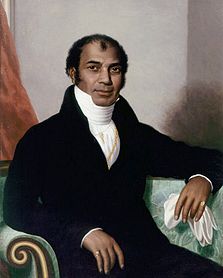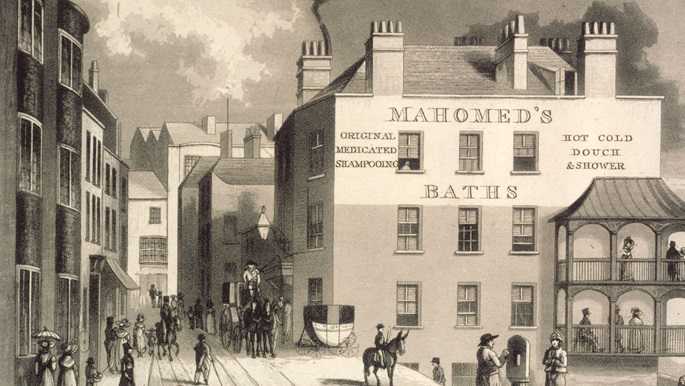 Sake Dean Mahomed (also Sheikh Din Muhammad) was born in Patna, India in 1759 and lived into his early 90s, dying in Brighton in 1851. Over the course of his life he would be a traveler, surgeon, entrepreneur, and the first Indian author to publish a book in English. He is also credited with introducing Indian cuisine and massage (shampoo baths) to Europe.
Sake Dean Mahomed (also Sheikh Din Muhammad) was born in Patna, India in 1759 and lived into his early 90s, dying in Brighton in 1851. Over the course of his life he would be a traveler, surgeon, entrepreneur, and the first Indian author to publish a book in English. He is also credited with introducing Indian cuisine and massage (shampoo baths) to Europe.
After serving in the British East India Company until 1782, Sake travelled to Ireland with a friend. It was there he met and eloped with his first wife, Jane Daly (https://brightonmuseums.org.uk/discover/2019/01/24/sake-dean-mahomed-brighton-resident-and-regency-entrepreneur/).
In 1794, after he and his wife emigrated to England, Mahomed published a book about India, The Travels of Dean Mahomet.
In 1810, he set up the first Indian restaurant, Hindoostane Coffee House, in London. Located at 34 George Street in Marylebone, the restaurant also provided home deliveries (https://londonist.com/2016/06/the-story-of-london-s-first-indian-restaurant). Due to financial difficulties, he sold the restaurant a year later, although it continued to operate until 1833. It was during his years in London that Mahomed also married Jane Jeffreys, who he also had children with.
His next venture was to move to Brighton in 1814. His family background was in making soaps, cleansers, and health products which helped Mahomed figure out how to capitalize on the bathing trends of his time. Opening a series of baths, his most famous was Mahomed’s Baths in East Cliff (https://www.inverse.com/article/52494-sake-dean-mahomed-shampooing-surgeon-of-brighton). 
These baths offered herbal steam/aromatherapy, shampoo (a form of head massage) and other spa like treatments (https://brightonmuseums.org.uk/discover/2019/01/24/sake-dean-mahomed-brighton-resident-and-regency-entrepreneur/). To further evagenlize his business, he published several pamphlets and treatise on the benefits of shampoo and aromatherapy.
Mahomed’s Baths served many famous and aristocratic patients, becoming the most popular in Brighton (Visram, 1986). In his book Shampooing; or, Benefits resulting from the use of Indian medicated vapour bath (1838), Mahomed claimed to help asthma, inflammation, paralysis, rheumatism and many other chronic illnesses.
Visram, R. (1986). Ayahs, Lascars and Princes: Indians in Britain 1700-1947. London: Pluto Press.









